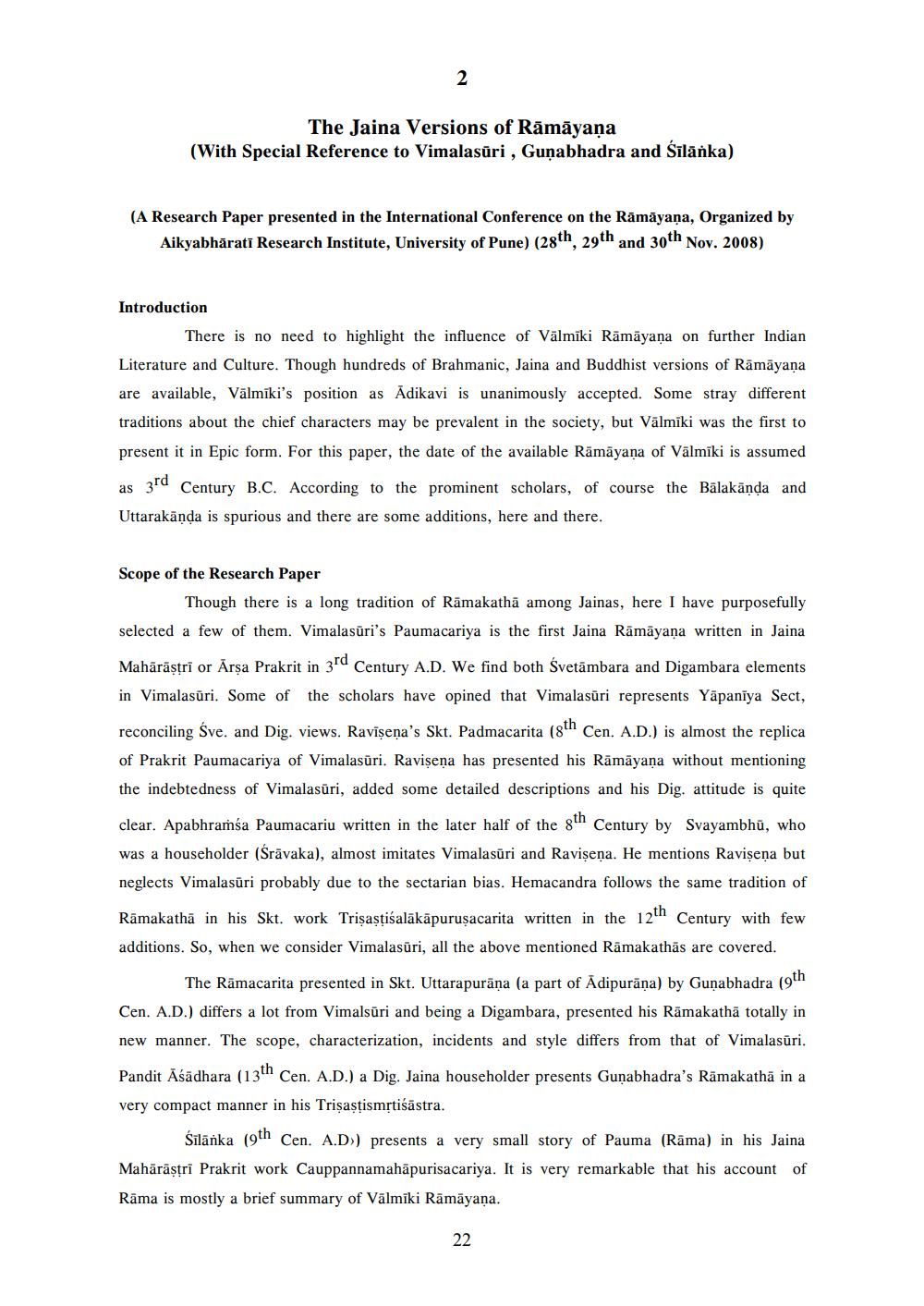________________
The Jaina Versions of Rāmāyana (With Special Reference to Vimalasūri , Guņabhadra and Sīlänka)
(A Research Paper presented in the International Conference on the Rāmāyaṇa, Organized by
Aikyabhārati Research Institute, University of Pune) (28th, 29th and 30th Nov. 2008)
Introduction
There is no need to highlight the influence of Vālmīki Rāmāyana on further Indian Literature and Culture. Though hundreds of Brahmanic, Jaina and Buddhist versions of Rāmāyana are available, Vālmīki's position as Adikavi is unanimously accepted. Some stray different traditions about the chief characters may be prevalent in the society, but Vālmīki was the first to present it in Epic form. For this paper, the date of the available Rāmāyaṇa of Vālmīki is assumed
as 3d Century B.C. According to the prominent scholars, of course the Bālakānda and Uttarakānda is spurious and there are some additions, here and there.
Scope of the Research Paper
Though there is a long tradition of Rāmakathā among Jainas, here I have purposefully selected a few of them. Vimalasūri's Paumacariya is the first Jaina Rāmāyaṇa written in Jaina
Mahārāstrī or Arsa Prakrit in 3d Century A.D. We find both Svetāmbara and Digambara elements in Vimalasūri. Some of the scholars have opined that Vimalasūri represents Yāpaniya Sect,
reconciling Sve. and Dig. views. Ravisena's Skt. Padmacarita (8th Cen. A.D.) is almost the replica of Prakrit Paumacariya of Vimalasūri. Ravisena has presented his Rāmāyaṇa without mentioning the indebtedness of Vimalasūri, added some detailed descriptions and his Dig, attitude is quite clear. Apabhramśa Paumacariu written in the later half of the 8th Century by Svayambhū, who was a householder (Śrāvaka), almost imitates Vimalasūri and Ravişena. He mentions Ravişeņa but neglects Vimalasūri probably due to the sectarian bias. Hemacandra follows the same tradition of
Rāmakathā in his Skt. work Trişastisalākāpurusacarita written in the 12th Century with few additions. So, when we consider Vimalasūri, all the above mentioned Rāmakathās are covered.
The Rāmacarita presented in Skt. Uttarapurāņa (a part of Adipurāna) by Gunabhadra (9 Cen. A.D.) differs a lot from Vimalsūri and being a Digambara, presented his Rāmakathā totally in new manner. The scope, characterization, incidents and style differs from that of Vimalasūri.
Pandit Āśādhara (13th Cen. A.D.) a Dig. Jaina householder presents Gunabhadra's Rāmakathā in a very compact manner in his Trișasțismrtiśästra.
śīlānka (9th Cen. A.D») presents a very small story of Pauma (Rāma) in his Jaina Mahārāstri Prakrit work Cauppannamahāpurisacariya. It is very remarkable that his account of Rāma is mostly a brief summary of Vālmīki Rāmāyana.
22




